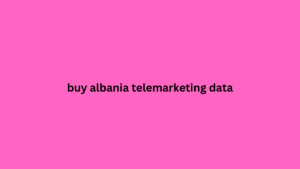3 SaaS Price Segmentation Real-Life Examples
Posted: Sat Dec 07, 2024 8:44 am
SaaS businesses tailor their pricing packages based on specific demographic factors like the targeted audience's age, income, or occupation. This approach is effectively implemented by creating packages that differ not only in price but also in a strong alignment of features and functionality.
For example, a freelancer’s needs are very different from those of SMBs or enterprises. Why should they pay for personalized customer support or system customizations when their business operations do not require such features?
The tiered pricing strategy is the most popular manner to highlight price segmentation within the SaaS industry. Let’s look at three examples of how big names in the software market crafted their pricing packages.
Microsoft 365
Offering essential products for a number of industries, buy albania telemarketing data Microsoft 365 goes pretty deep in price segmentation. This SaaS company works hard to identify customer segments, looking at a number of criteria and monetizing their services in different layers.
First, it segments its customers based on usage type, offering home and business use plans. Next, it focuses its pricing strategy on users. The monetization is performed per user, and packages differ in features.

Moreover, Microsoft 365 uses pricing to its advantage, boosting brand image by offering special prices to more price sensitive customers, namely students. The packages for this category are only $2.99, the lowest price in their monetization scheme.
Crazy Egg
Crazy Egg, the web analytics and user behavior tracking tool, has gained an increased amount of popularity in the eCommerce world. Looking at how this SaaS business approaches its monetization strategy, it’s pretty obvious that Crazy Egg understands the power of correct pricing.
The road they decided to take is usage-based segmentation, creating different tiers that offer each customer group-specific value. The more utilized the software is, the higher the price.
Additionally, it is worth noting that Crazy Egg has a custom pricing plan dedicated to enterprise businesses, an audience segment in which higher prices are practiced and advanced product features and personalized services are offered.
For example, a freelancer’s needs are very different from those of SMBs or enterprises. Why should they pay for personalized customer support or system customizations when their business operations do not require such features?
The tiered pricing strategy is the most popular manner to highlight price segmentation within the SaaS industry. Let’s look at three examples of how big names in the software market crafted their pricing packages.
Microsoft 365
Offering essential products for a number of industries, buy albania telemarketing data Microsoft 365 goes pretty deep in price segmentation. This SaaS company works hard to identify customer segments, looking at a number of criteria and monetizing their services in different layers.
First, it segments its customers based on usage type, offering home and business use plans. Next, it focuses its pricing strategy on users. The monetization is performed per user, and packages differ in features.

Moreover, Microsoft 365 uses pricing to its advantage, boosting brand image by offering special prices to more price sensitive customers, namely students. The packages for this category are only $2.99, the lowest price in their monetization scheme.
Crazy Egg
Crazy Egg, the web analytics and user behavior tracking tool, has gained an increased amount of popularity in the eCommerce world. Looking at how this SaaS business approaches its monetization strategy, it’s pretty obvious that Crazy Egg understands the power of correct pricing.
The road they decided to take is usage-based segmentation, creating different tiers that offer each customer group-specific value. The more utilized the software is, the higher the price.
Additionally, it is worth noting that Crazy Egg has a custom pricing plan dedicated to enterprise businesses, an audience segment in which higher prices are practiced and advanced product features and personalized services are offered.